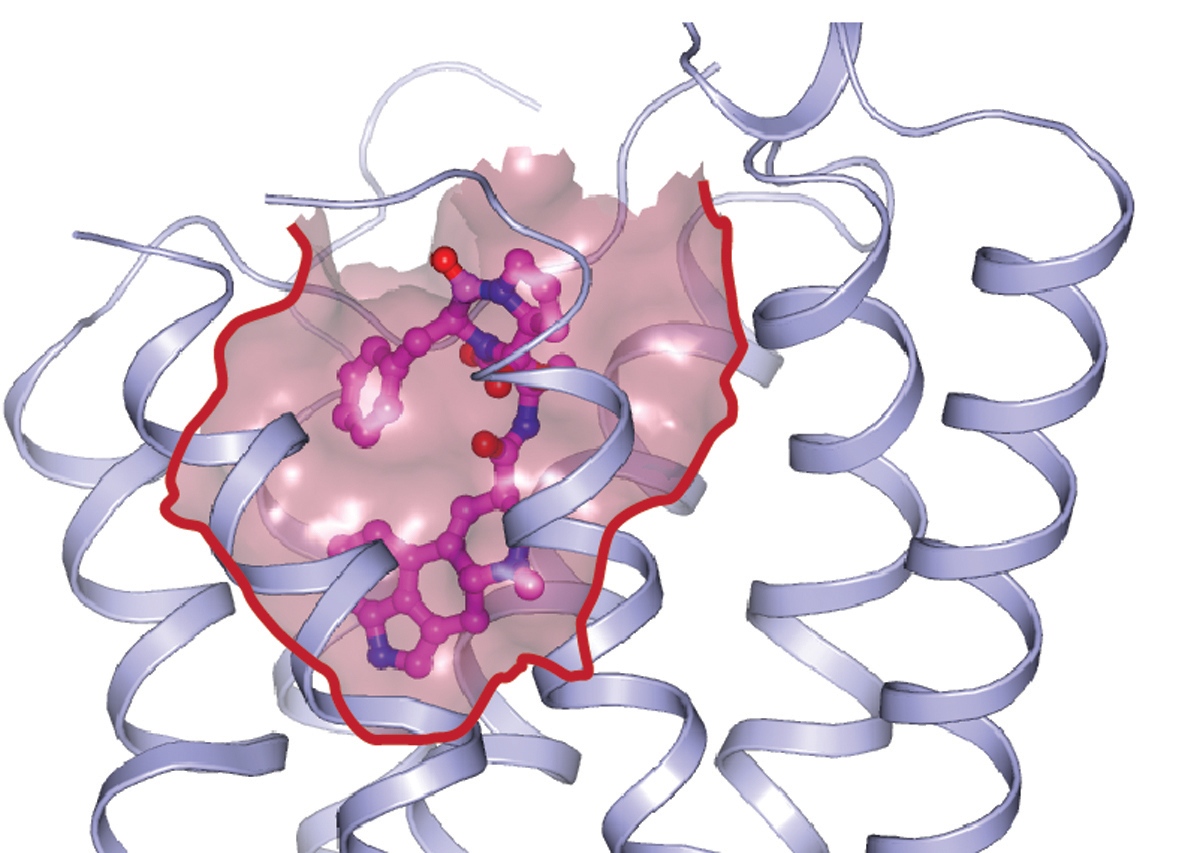Serotonin receptors offer clues for antidepressants, consciousness
March 25, 2013

Two studies have decoded the structure of two of the brain’s serotonin receptors. Here shown is a receptor known as 1B with the migraine drug ergotamine (pink) locked into one of its binding pockets. (Credit: Chong Wang & Huixian Wu)
Researchers have deciphered the molecular structures of two of the brain’s crucial lock-and-key mechanisms, Nature News reports.
The two molecules are receptors for the natural neurotransmitter serotonin — which regulates activities such as sleep, appetite and mood — and could provide targets for future drugs to combat depression, migraines or obesity. They could also help in understanding how the physical structures of the brain produce consciousness.
There are 14 different known serotonin receptors. The molecules lie on the outer membranes of nerve cells; when drugs or neurotransmitters lock into the receptors from outside the cell, they trigger the release of other chemicals inside the cell.
Those chemicals — which can be different depending on what drug or neurotransmitter has triggered them — activate further hormones and metabolites, producing signalling cascades that are ultimately responsible for many aspects of the way we feel, perceive and behave.
The researchers also investigated how differences in binding affected chemical cascades. They triggered both 1B and 2B with the powerful psychedelic drug LSD and one of its precursors, a migraine drug called ergotamine. The drugs produced two different chemical cascades — G-protein and β-arrestin — from the 1B receptor, but only one (β-arrestin) from the 2B receptor.
Roth says that learning to control the cascades is likely to be crucial in maximizing beneficial effects of drugs and minimizing side effects.